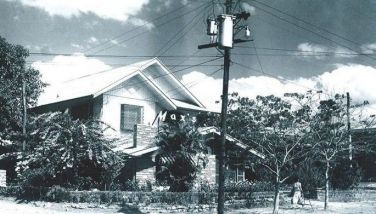Technical

Verification of certain pleadings is required to assure that its allegations are true and correct, not speculative or merely imagined; and have been made in good faith. This verification is made through an affidavit or sworn statement confirming that the affiant has read the pleading and its allegations are true and correct of his own personal knowledge or based on authentic records. Can such verification be dated ahead of the pleading itself? This is the question raised in this case of the spouses Val and Lulu.
Val and Lulu owned an apartment which they leased to Rita in January, 1980 for P1500 a month before migrating to the
Despite Rita’s defense that she was already the owner of the apartment as it was already sold to her by virtue of an MOA dated
Thus Val and Lulu filed a Petition for Review with the Court of Appeals (CA) on
Nevertheless the CA dismissed their petition due to their failure to attached some papers and pleadings filed with the MTC and the RTC and other material portions of the record supporting their petition.
When the couple moved for reconsideration by submitting the documents they failed to attach, the CA nevertheless denied their motion. The CA said that it could have granted the motion since they have already attached the necessary documents, but because their verification/certification was dated March 17, 2005, they could not have actually read and understood the petition or attested to the truth of its contents because said petition was dated March 31, 2005 and was therefore still inexistent at the time they executed the verification certification (March 17, 2005). Was the CA correct?
No. In these days of e-mails and other technological advances it is not hard to believe that a client may read the contents of a pleading without seeing the same pleading to be actually filed with the court. The rules do not require that a litigant should read the very same document that is to be filed before the courts. So the couple’s explanation that they read a copy of the petition through an electronic mail sent to them by their lawyers is reasonable enough.
Besides the circumstance that the couple is residing overseas but litigating locally through their local counsel must be taken into account in determining compliance with the verification requirements that has the added formalities of authentication by our consulate aside from being notarized abroad. In fact the couple already submitted initially a photo copy of the verification since the original was still being authenticated by the consulate where several factors may come into play like: the location of the requesting party from the consulate; the peculiarities of foreign laws on notaries, the volume of transactions in the consulate and the mode of sending the authenticated documents to the Philippines.
Furthermore, Val and Lulu also manifested utmost good faith when they filed their manifestation about their problem, intent and plan of compliance with the verification requirement. Lastly, most of the material allegations in the CA petition are already in their Complaint for illegal detainer filed in the MTC which was duly verified and authenticated. So verification of these facts in the CA petition was strictly a redundancy; its filing remained a necessity only because the Rules require it which is merely formal and not jurisdictional.
The variance between the dates of the Petition and the Verification does not therefore necessarily lead to the conclusion that no verification was made or that it was false (Spouses Valmonte vs. Alcala et. al., G.R. 168667,
Note: Books containing compilation of my articles on Labor Law and Criminal Law (Vols. I and II) are now available. Call tel. 7249445.
* * *
E-mail at: jcson@pldtdsl.net
- Latest
- Trending





















